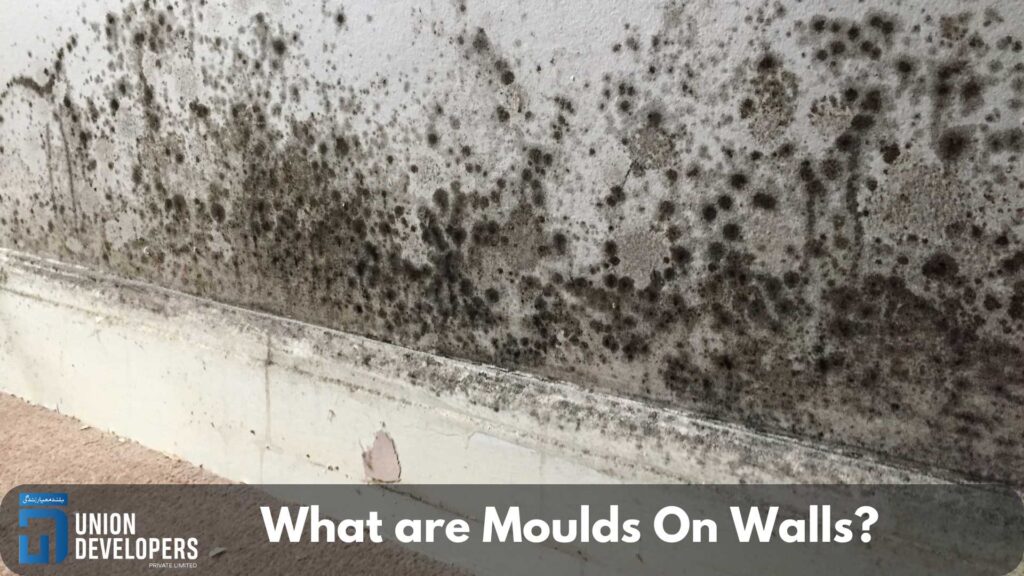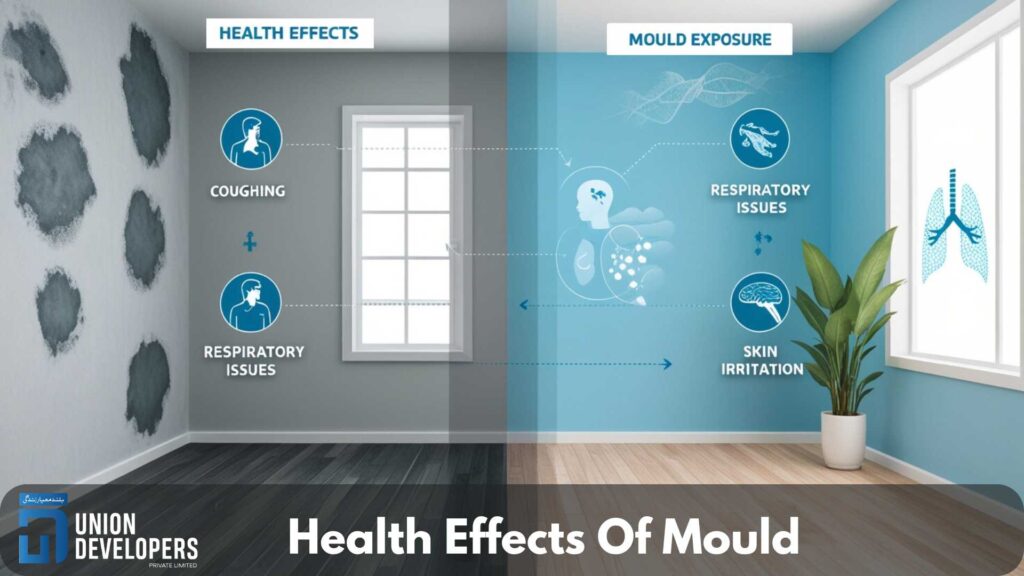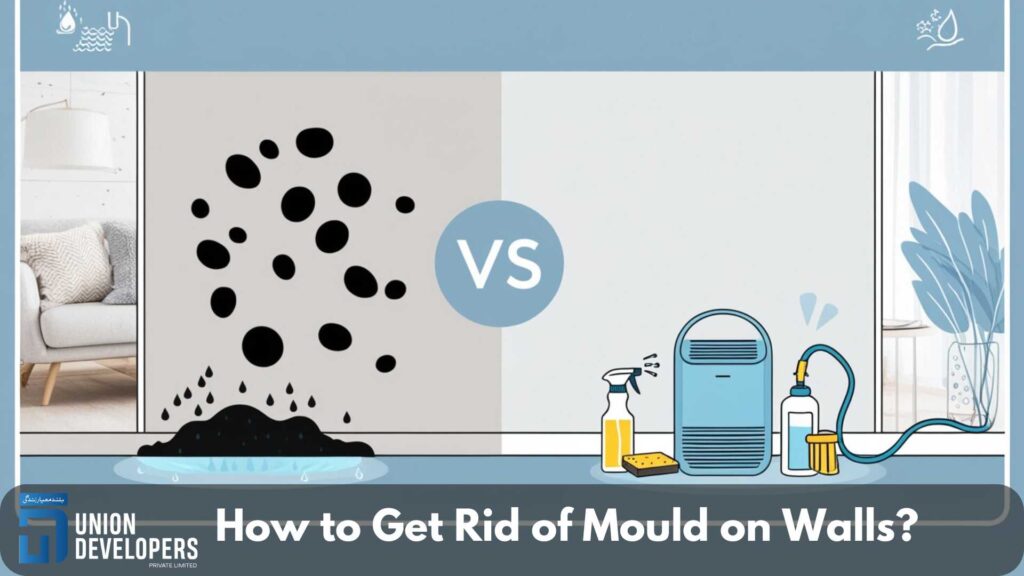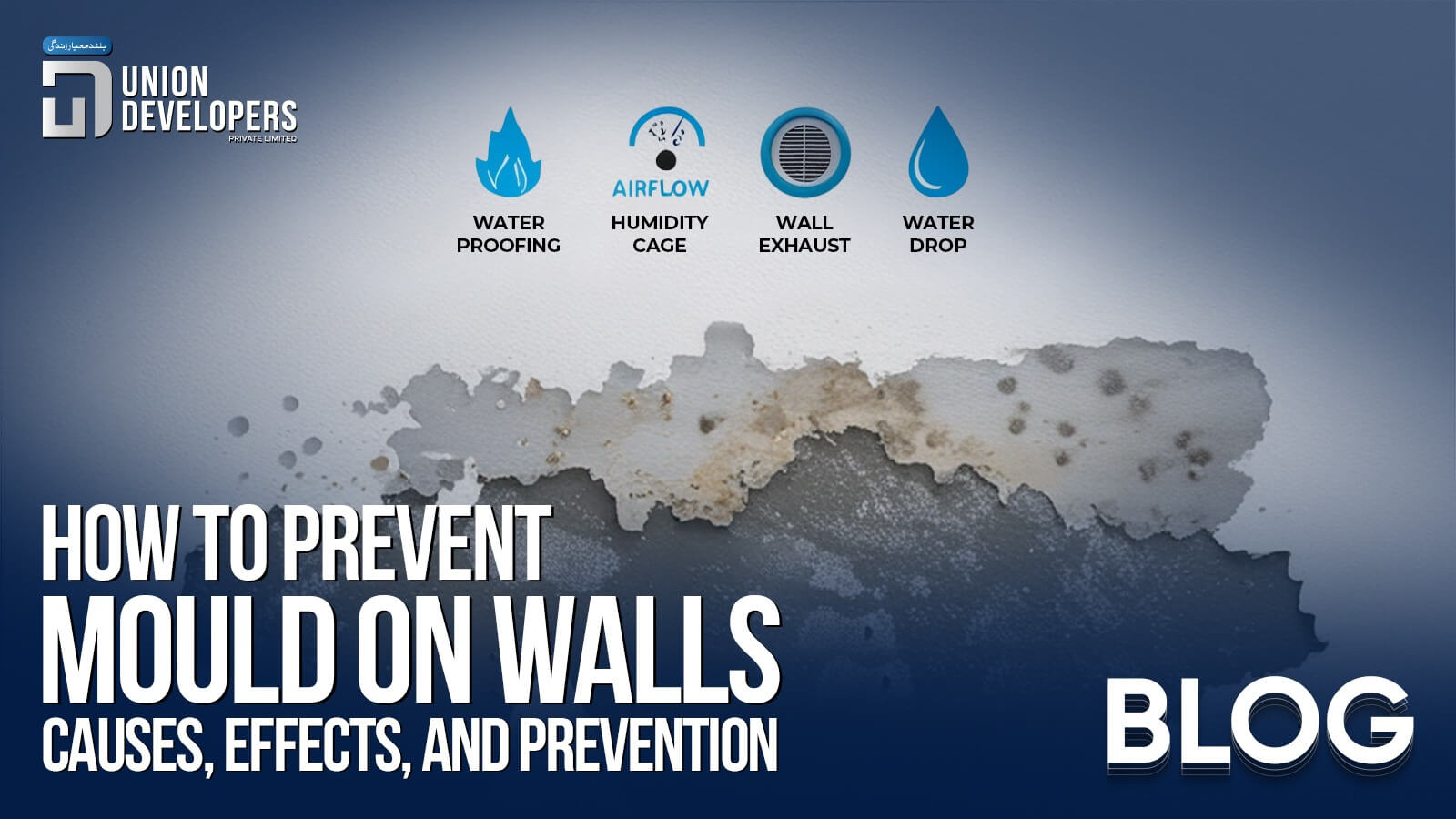Whether it is slim black spots on your walls and curtains, fuzzy white patches on your floors, or a slick orange film on your kitchen, moulds in households can be more than that. In colder months, mildew and damp mould on walls get more severe. These moulds on walls not only give bad sight but also affect health badly. If you have asthma or any allergies, they can irritate your skin, nose, lungs, and eyes. In this write-up, we will discuss how to get rid of mould on walls.
What are Moulds On Walls?

Moulds are small living things that can grow indoors or outdoors whenever oxygen and moisture meet. They are a kind of fungi that attacks not only your walls but also your whole house. Outdoors, moulds play an important role, in breaking down plants, dead leaves, and trees. Moulds grow on moisture and reproduce by sending small, lightweight spores through the air. You experience black moulds on walls every day in small mounts.
Small amounts of mould can be harmless, but when they land on a damp spot in your house, they can grow. Moreover, they can release spores into the air, which can be inhaled easily. If you are sensitive to mould, then large amounts of spores can cause your health problems.
Mould Vs. Mildew
Mildew is a special kind of mould, and some people refer to it as household mould in general. Usually, mildew means the type of mould that can be easily cleaned, often growing in a pattern on window sills or shower walls. The fact that these are easily removable makes them less susceptible to the house. However, it is a sign of too much moisture in the area.
Where Do Moulds Grow In Your Houses?

Moulds can grow on your walls, carpet, appliances, furniture, and even potted plants. These places can provide food for mould to grow, including newspapers and piles of books. However, moulds mostly need moisture, so you will find them mostly in damp places like kitchens, bathrooms, basements, laundry rooms, and crawl spaces.
Now, the question is, how would you know you have mould in your house? Moulds on walls can look like black stains, furry growths, or specks of various colours, including white, orange, black, brown, or green. You will find bigger spots if the black moulds on walls are bigger
Sometimes, you will learn about moulds by having a musty or earthy smell in your house. If you smell something earthy, then you must look behind or beneath surfaces to spot moulds.
You should sniff around and look into different places at your house. If you have leaks on your plumbing or roofs, floods in basements, water damage, water stains, and warped walls. Also, you will have itchy eyes or a runny nose in a part of your house where moulds have grown.
Also Read: Home Renovation: Breathing New Life into Time-Worn Residence
Health Effects Of Mould

The mould spores that travel through the air of your house aren’t health hazards because they are natural. You will have dust particles enter your house daily as well. However, if you are sensitive to mould, you might get allergy symptoms. If the black moulds on walls are growing in your house, then it can make you sick.
There are some health effects of mould on walls.
Allergies
An allergy happens when your body experiences a substance and starts reacting to it because of its harmful nature. This is the common effect of moulds that can cause coughing, sneezing, wheezing, and a runny nose.
Irritation
Some people with no allergies may have irritated eyes, throats, or noses due to exposure to moulds.
Asthma
Asthma is a chronic disease involving trouble breathing and inflamed airways. Mould in your home can increase this risk of developing asthma or making it worse. There is a common mould called Aspergillus fumigatus, which causes fungal asthma. The condition in asthma can cause mucus and block your airways.
Lung And Eye Infection
While eye irritation from mould is common, fungal eye infections are not common. They usually happen because of an injury like getting material in your eyes. If you have a weak immune system, then moulds can affect your lungs as well. If you have a chronic condition, like emphysema, advanced sarcoidosis, or tuberculosis, it can infect you badly.
How to Get Rid of Mould on Walls?

It is impossible to get rid of mould spores in your house. However, you can reduce the moisture in your house as it aids the mould in growing more. If there is mould growing in your house, then you must clean up the mould and fix the cause of dampness in your home. If you clean the moulds every day but don’t fix the moisture issue, then mould will return more often.
Clean Mould In Your Home
The best rule of thumb is that you can clean up a small, mouldy area on your own. To clean the wall, you can start by scrubbing the affected area with water and a detergent mixture. After cleaning the walls with the mixture, you can let it dry. If the area is badly affected, then you must use the bleach solution and only use a cup of bleach in a gallon of water.
Protect yourself whenever you clean up mould.
- You must open your windows and doors for ventilation.
- Wear an N95 respirator, gloves, and eye goggles.
- Never mix ammonia and bleach, which can produce a toxic gas.
Preventing Mould Around The House
You must use dehumidifiers and air conditioning to control the moisture in the air. Also, try to keep indoor humidity below 60%. You can measure the humidity with the hydrometer. It is available in many convenient stores. You can also adjust the humidifiers if you notice moisture in your house. Clean your air conditioning drip pans and ensure drain lines flow properly.
You should also dry the wet area within one or two days to prevent mould growth. Also, fix your seepage and leaks. Always check your cooling or heating system to ensure it’s operating properly. Open your doors and increase air circulation by using fans as well.
Lastly,
Mould growing in your home is natural but can be a health hazard. It can cause health issues if you have allergies, asthma, or a weak immune system. If you have noticed mould on walls, it is important to clean it up and prevent the mould from growing. Moulds usually grow in moisture and can spread not only on walls but everywhere in the house. Many mould problems can be prevented by controlling the moisture conditions and cleaning the areas properly.





